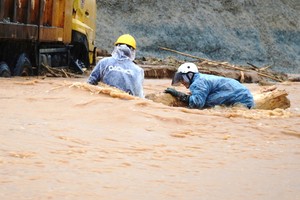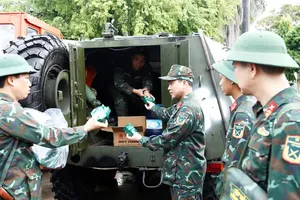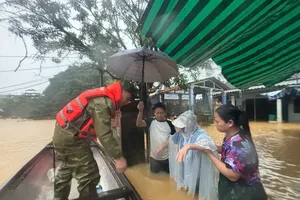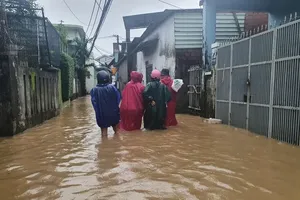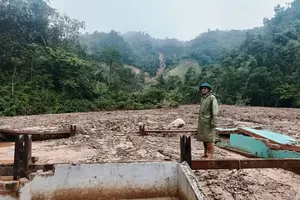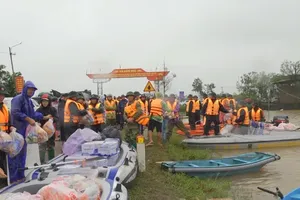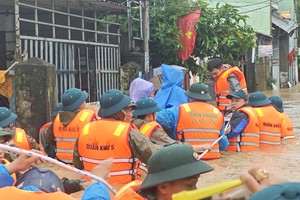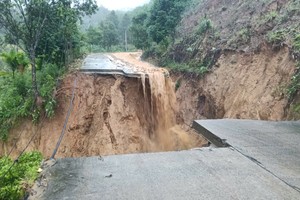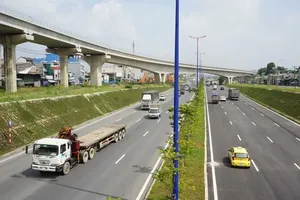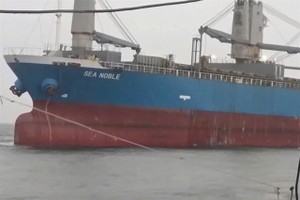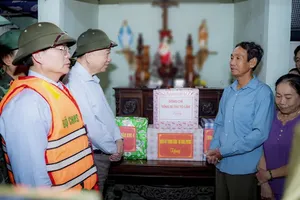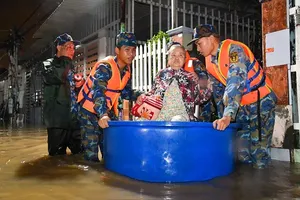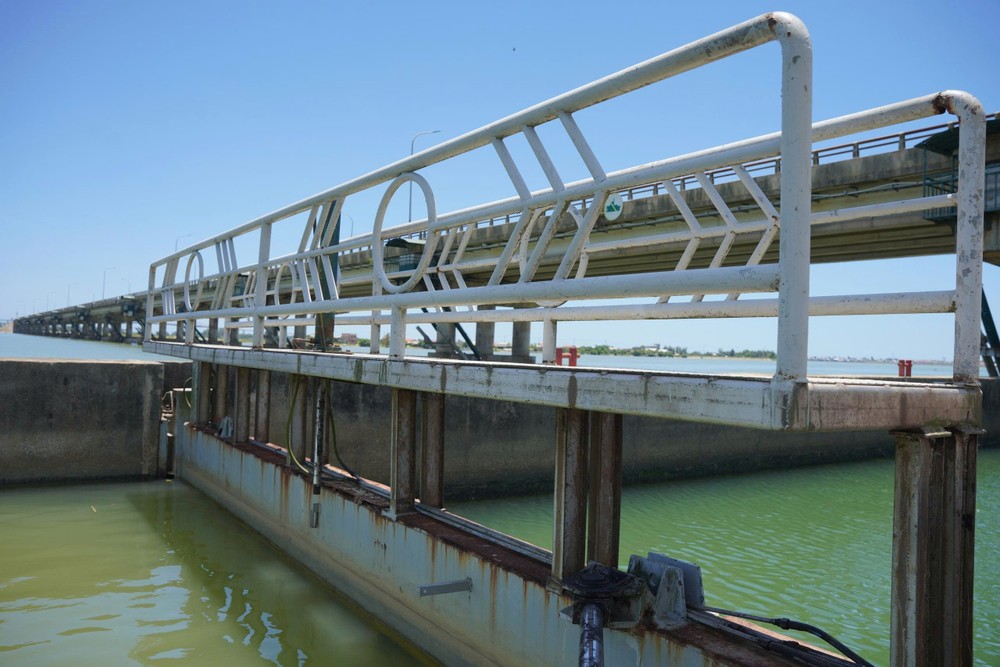
Thao Long saltwater intrusion prevention dam, located at the downstream end of the Huong River in Hue City, was not designed with backup sluice gates, posing significant risks in the event of malfunction, with potential failure to open or close the gates leading to serious consequences.
Commissioned in August 2001 and operational since June 2006, Thao Long Dam was built with a total investment of VND151 billion. The structure includes a saltwater prevention sluice gate system spanning 480.5 meters, divided into 15 compartments each 31.5 meters wide, along with a boat lock. A 10-meter-wide traffic bridge was also integrated into the dam. Its gates are made of CT3 steel and operated via a hydraulic cylinder system.
Experts have recognized Thao Long Dam as the largest saltwater intrusion prevention structure in Southeast Asia. Since its inauguration, it has played a vital role in regulating salinity and retaining freshwater across the Huong and Bo rivers, ensuring sufficient water supply for agriculture, industry, and household use in Hue. It has also helped improve ecological conditions and enhance the landscape of the Huong River and Tam Giang Lagoon.
However, after years of exposure to harsh outdoor conditions—particularly salinity, humidity, and lightning—the CT3 steel gates, hydraulic systems, and electronic components have suffered heavy corrosion and rusting. Technical equipment has deteriorated significantly, while sediment and aquatic organisms have accumulated on water barriers. Critically, the lack of a backup gate system leaves the dam vulnerable to major operational failures.


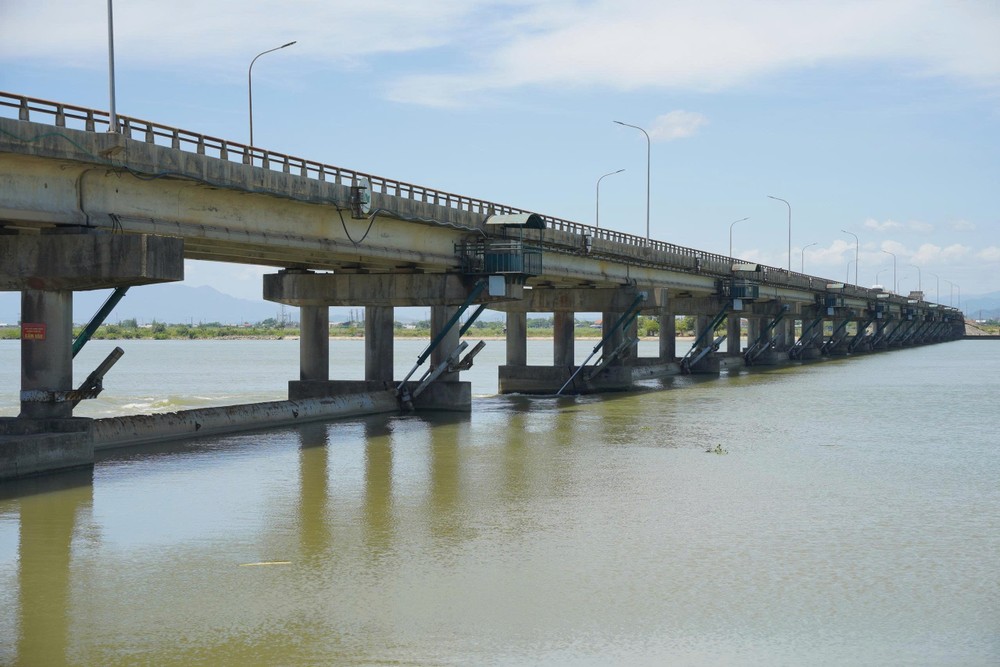
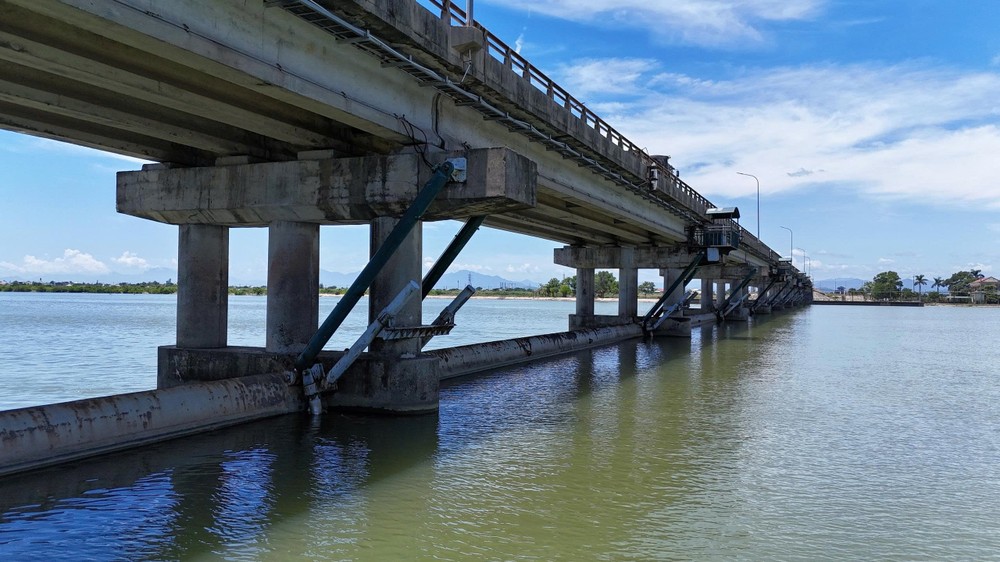
During a recent inspection, Deputy Minister of Agriculture and Environment Nguyen Hoang Hiep announced the ministry’s approval of an urgent repair project under Decision No.2846/QD-BNNMT, allocating over VND348 billion from the central Government budget to ensure the dam’s operational safety.
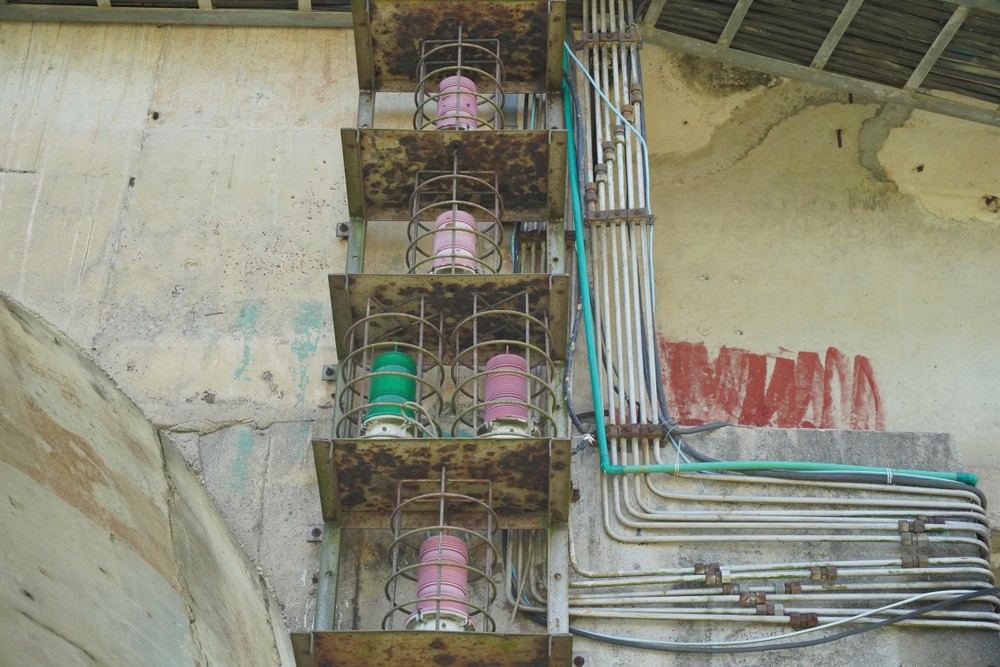
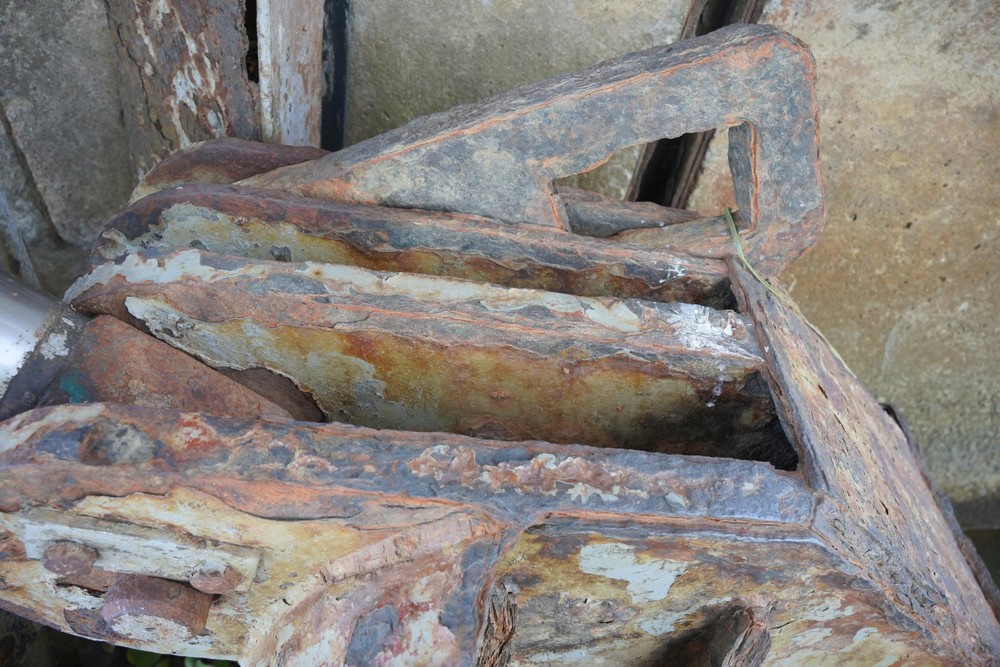
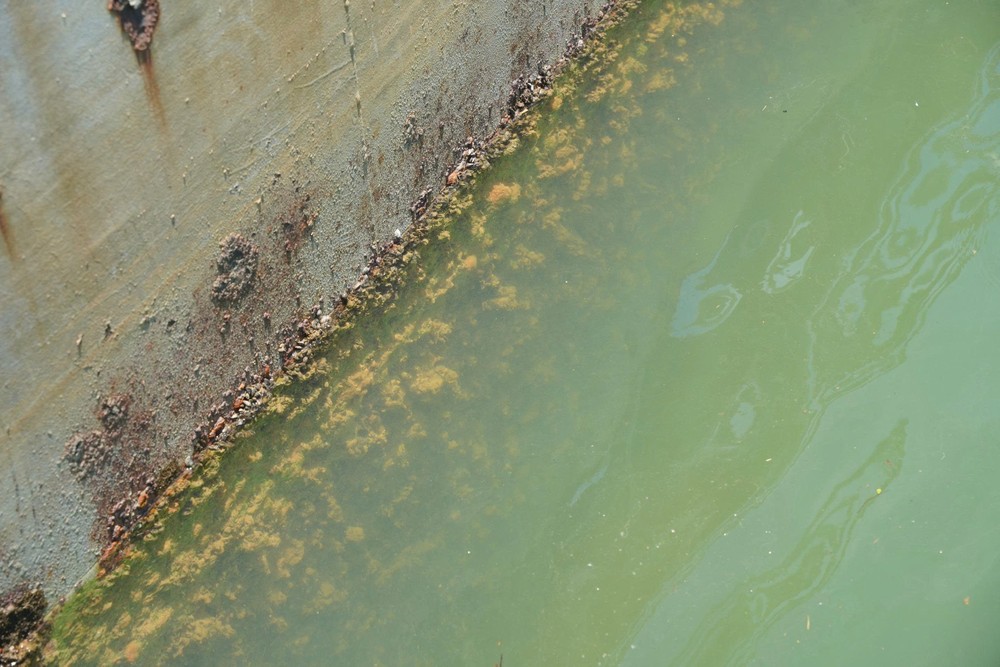

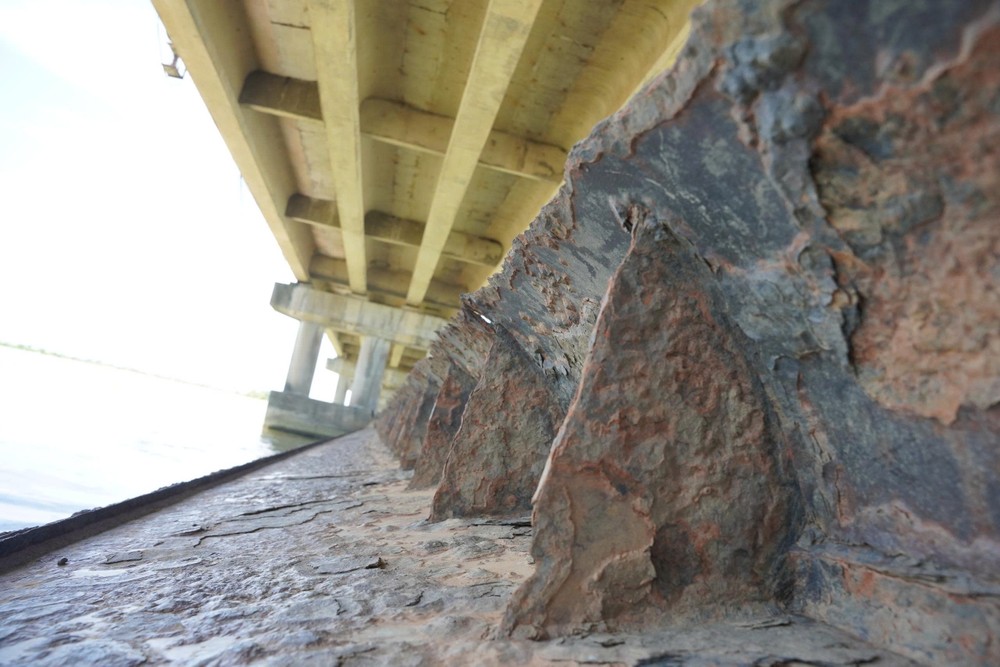
The project, overseen by the Hue Management Board of Investment Projects on Agricultural Works and Rural Development, is scheduled to begin construction in October 2025 and be completed within four years. It will involve repairs and upgrades to the hydraulic and mechanical components, replacement and overhaul of sluice gates, refurbishment of the boat lock chamber, installation of new control systems, and improvements to facilities used for operations and management.
Meanwhile, in Quang Tri Province, authorities are racing to complete a critical flood-resilient project in Lia Commune ahead of the rainy season. Mr. Nguyen Hoai Nam, Chief of the Office of the Quang Tri People’s Committee, on July 31, said the provincial leadership has instructed agencies to fast-track the construction of flood-resilient bridges to ensure safety and border security during storms.

Chairman Tran Phong of the Quang Tri People’s Committee has ordered that funding for the bridges on Provincial Road 586 be finalized by August 5, 2026. The Department of Construction has been tasked with directing contractors to mobilize manpower, materials, and equipment to work around the clock. It must also strictly penalize any delays and assign personnel to closely monitor progress, address obstacles, and ensure both schedule and quality. The Lia Commune People’s Committee must complete land clearance by August 19 and work closely with the project owner during construction.
Approved in August 2024 with a budget of VND26.8 billion, the project includes two bridges spanning nearly 730 meters in total. Yet, the project remains incomplete, with contractors having finished only the main bridge structure—valued at around VND10.3 billion—while approach roads, slopes, and auxiliary works remain unfinished.
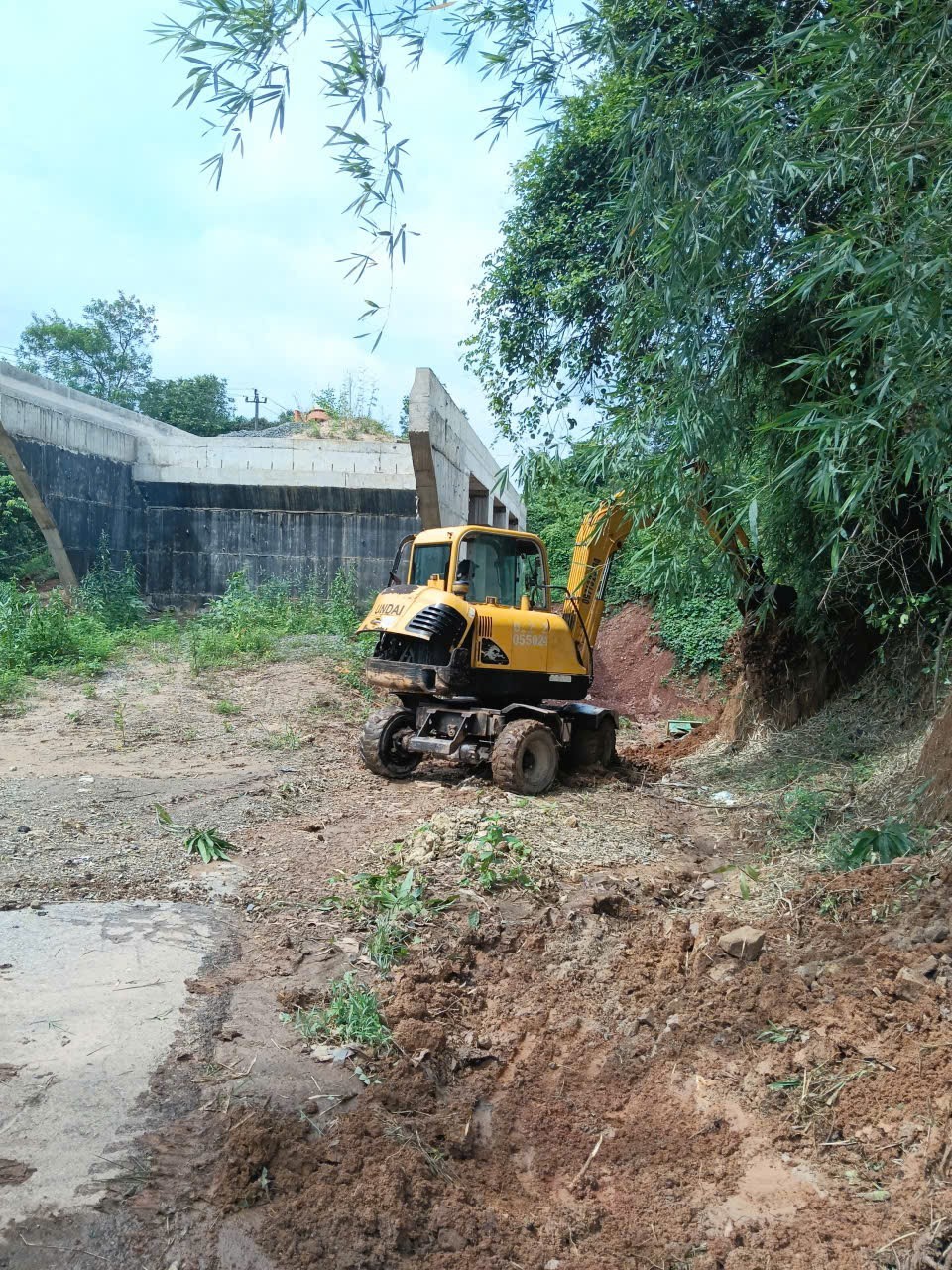
Provincial Road 586, which connects National Highway 9 to Lia’s commune center, is a lifeline for the local economy, rescue operations, and cross-border access to Laos. However, the road is frequently cut off during the rainy season due to low-head dams, particularly at Km3+937 and Km12+771, which have been severely inundated by floods.
According to Mr. Tran Dinh Dung, Chairman of Lia Commune’s People’s Committee, this is the only access road into the commune. The prolonged construction of the two flood-resilient bridges has caused major difficulties for local residents, government officials, border security forces, healthcare workers, and teachers during flood events. The provincial government is now pushing for the project’s completion before the storm season begins.
